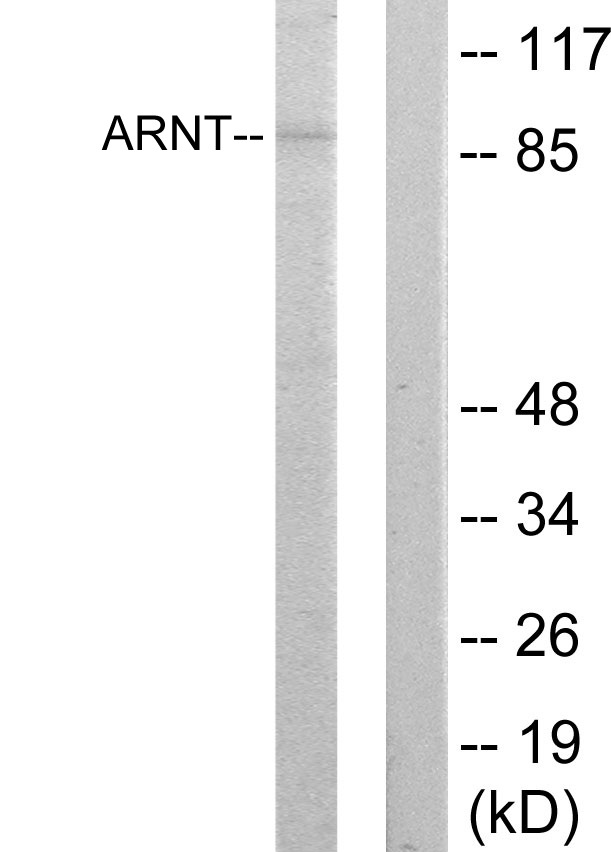HIF1 beta antibody
GTX128795
ApplicationsImmunoFluorescence, Western Blot, ImmunoCytoChemistry, ImmunoHistoChemistry, ImmunoHistoChemistry Paraffin
Product group Antibodies
ReactivityHuman, Mouse
TargetARNT
Overview
- SupplierGeneTex
- Product NameHIF1 beta antibody
- Delivery Days Customer9
- Application Supplier NoteWB: 1:500-1:3000. ICC/IF: 1:100-1:1000. IHC-P: 1:100-1:1000. *Optimal dilutions/concentrations should be determined by the researcher.Not tested in other applications.
- ApplicationsImmunoFluorescence, Western Blot, ImmunoCytoChemistry, ImmunoHistoChemistry, ImmunoHistoChemistry Paraffin
- CertificationResearch Use Only
- ClonalityPolyclonal
- Concentration1 mg/ml
- ConjugateUnconjugated
- Gene ID405
- Target nameARNT
- Target descriptionaryl hydrocarbon receptor nuclear translocator
- Target synonymsARNT1, HIF-1-beta, HIF-1beta, HIF1-beta, HIF1B, HIF1BETA, TANGO, bHLHe2, aryl hydrocarbon receptor nuclear translocator, class E basic helix-loop-helix protein 2, dioxin receptor, nuclear translocator, hypoxia inducible factor 1 subunit beta, hypoxia-inducible factor 1, beta subunit
- HostRabbit
- IsotypeIgG
- Protein IDP27540
- Protein NameAryl hydrocarbon receptor nuclear translocator
- Scientific DescriptionThe aryl hydrocarbon (Ah) receptor is involved in the induction of several enzymes that participate in xenobiotic metabolism. The ligand-free, cytosolic form of the Ah receptor is complexed to heat shock protein 90. Binding of ligand, which includes dioxin and polycyclic aromatic hydrocarbons, results in translocation of the ligand-binding subunit only to the nucleus. Induction of enzymes involved in xenobiotic metabolism occurs through binding of the ligand-bound Ah receptor to xenobiotic responsive elements in the promoters of genes for these enzymes. This gene encodes a protein that forms a complex with the ligand-bound Ah receptor, and is required for receptor function. The encoded protein has also been identified as the beta subunit of a heterodimeric transcription factor, hypoxia-inducible factor 1 (HIF1). A t(1;12)(q21;p13) translocation, which results in a TEL-ARNT fusion protein, is associated with acute myeloblastic leukemia. Three alternatively spliced variants encoding different isoforms have been described for this gene. [provided by RefSeq]
- ReactivityHuman, Mouse
- Storage Instruction-20°C or -80°C,2°C to 8°C
- UNSPSC12352203





![IHC-P analysis of hmuan colon tissue section using GTX00799 HIF1 beta antibody [GT1141]. Dlution : 1:100](https://www.genetex.com/upload/website/prouct_img/normal/GTX00799/GTX00799_20191101_AP_003_37_w_23053121_849.webp)
![WB analysis of whole cell extracts (30 microg lysate) of HeLa (Lane 1), MCF-7 (Lane 2), NIH/3T3 (lane 3) and PC 12 (Lane 4) using GTX22771 HIF1 beta antibody [2B10]. Dilution : 1:500-3000](https://www.genetex.com/upload/website/prouct_img/normal/GTX22771/GTX22771_1588_WB_w_23060620_282.webp)
